Datebook: Pacific Standard time gets rolling with shows on Disney and Latin America, queer avant-garde, Martín Ramírez
- Share via
The more than 80 exhibitions and events tied to Pacific Standard Time: Los Angeles / Latin America are beginning to open in a big way around Southern California and it’s an embarrassment of riches. Get out your calendar, because there is a lot to see — including a Latin American take on Disney, a show about the border and another about a queer avant-garde, as well as a pop-up featuring a collective exhibition by cutting edge art spaces from Latin America. Here’s the list:
“How to Read El Pato Pascual: Disney’s Latin America and Latin America’s Disney,” at the MAK Center and the Luckman Fine Arts Center. Organized by curator Jesse Lerner and artist Ruben Ortiz-Torres, this intriguing exhibition looks at the ways in which Disney was influenced by Latin America and how Latin America has taken Disney cartoon characters and co-opted them for its own purposes. It’s a comprehensive look at how culture is reflected back and forth between the U.S. and Latin America — one based on imagery crafted in Disney’s studio right in Los Angeles. For students of history, the related catalog is a must. Opens Saturday and runs through Jan. 14. An opening reception will be held at the MAK on Saturday at 6 p.m. 835 N. Kings Road, West Hollywood, makcenter.org. A separate opening reception will be held at the Luckman on Sunday at 4 p.m. 5151 State University Drive, Los Angeles, luckmanarts.org.
“Martín Ramírez: His Life in Pictures, Another Interpretation,” at ICA LA. The self-taught artist Martín Ramírez has drawn the attention of museums in the past for the bold, stylized drawings of horses, trains and caballeros he made over decades while institutionalized in a California psychiatric institution during the 20th century. This is the first to place his work within the context of Mexican art. It also represents the debut of the ICA LA in its new downtown space. It was formerly the Santa Monica Museum of Art. Opens Saturday and runs through Dec. 31. 1717 E. 7th St., downtown Los Angeles, theicala.org.
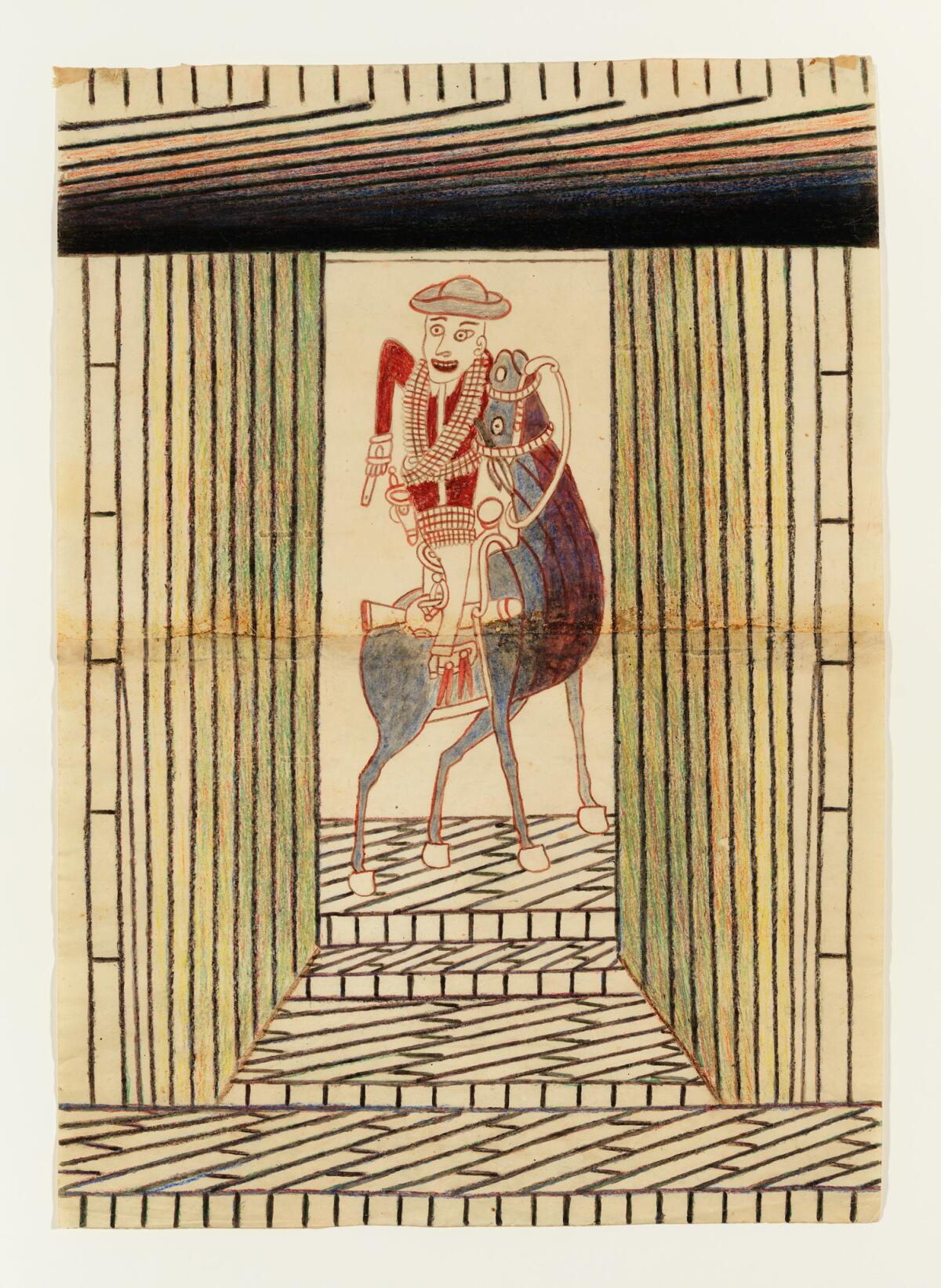
“The U.S.-Mexico Border: Place, Imagination and Possibility,” at the Craft & Folk Art Museum. Given the political climate, a show about the U.S.-Mexico border could not be more poignant. And this particular exhibition looks at how the world’s most heavily demarcated dividing line has inspired all manner of thinking about art, architecture, design, sculpture, photography and painting. If only our political leaders would go see it. Opens Sunday and runs through Jan. 7. 5814 Wilshire Blvd., Mid-Wilshire, cafam.org.
Axis Mundo: Queer Networks in Chicano L.A., at MOCA Pacific Design Center and ONE Gallery. This is another ground-breaking Pacific Standard Time exhibition. On view in two locations in West Hollywood, it tracks the art, music and performance work of a network of queer avant-garde artists from Los Angeles contending with issues such as sexuality, feminism, identity, punk music and their racial and ethnic identities. Opens Saturday and runs through Dec. 31. At MOCA PDC, 8687 Melrose Ave., West Hollywood, and ONE Gallery, West Hollywood, 9007 Melrose Ave., West Hollywood, one.usc.edu.
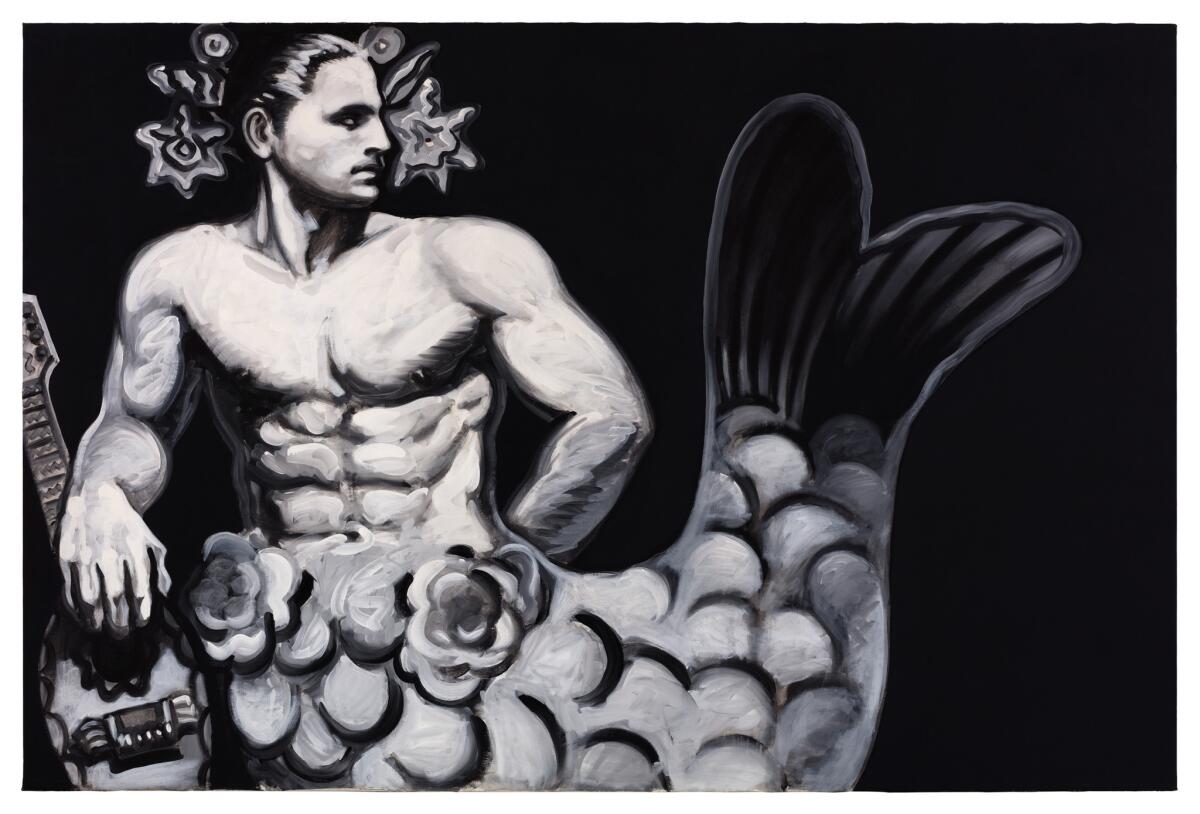
“Condemned to be Modern,” at the Los Angeles Municipal Art Gallery. This exhibition looks at the ways in which Latin American artists have contended with the legacy of Modernist architecture throughout the continent, looking at its innovations, and the ways it has and hasn’t fulfilled its utopic ideals in countries such as Mexico, Cuba and Brazil. Opens Sunday at 2 p.m. and runs through Jan. 28. 4800 Hollywood Blvd., Hollywood, lamag.org.
Jeffrey Gibson, “In Such Times,” at Roberts & Tilton. Gibson takes elements from the popular culture — objects, patterns, song lyrics and even bits of detritus — and reconfigures them in wry and dynamic ways. A punching bag, for example, is rendered useless under layers of vivid beads and bells, the phrase “Love is the Drug” written into the patterns. An object of pugilism transformed into a talisman for its exact opposite. Opens Saturday at 6 p.m. and runs through Oct. 14. 5801 Washington Blvd., Culver City, robertsandtilton.com.
Carolina Caycedo, Clarissa Tossin and Kim Farkas and LAMOA, at Commonwealth and Council. The gallery is launching a trio of interesting exhibitions this week. The first, titled “Hunger as Teacher,” features work by Colombian artist Carolina Caycedo from her ongoing project “Be Dammed,” which examines the effect of dams on riverside communities as well as larger ecologies. The second, “The Mayan,” showcases art by Clarissa Tossin, an artist preoccupied with architecture, who has created a series of sculptures inspired by the Mayan Revival-style of architecture of the 1920s. And the last, “Le bien comun,” is a collaboration between artist Kim Farkas and the experimental exhibition space, the Los Angeles Museum of Art. Opens Saturday at 5 p.m. and runs through Oct. 21. 3006 W. 7th St., Suite 220, Koreatown, Los Angeles, commonwealthandcouncil.com.
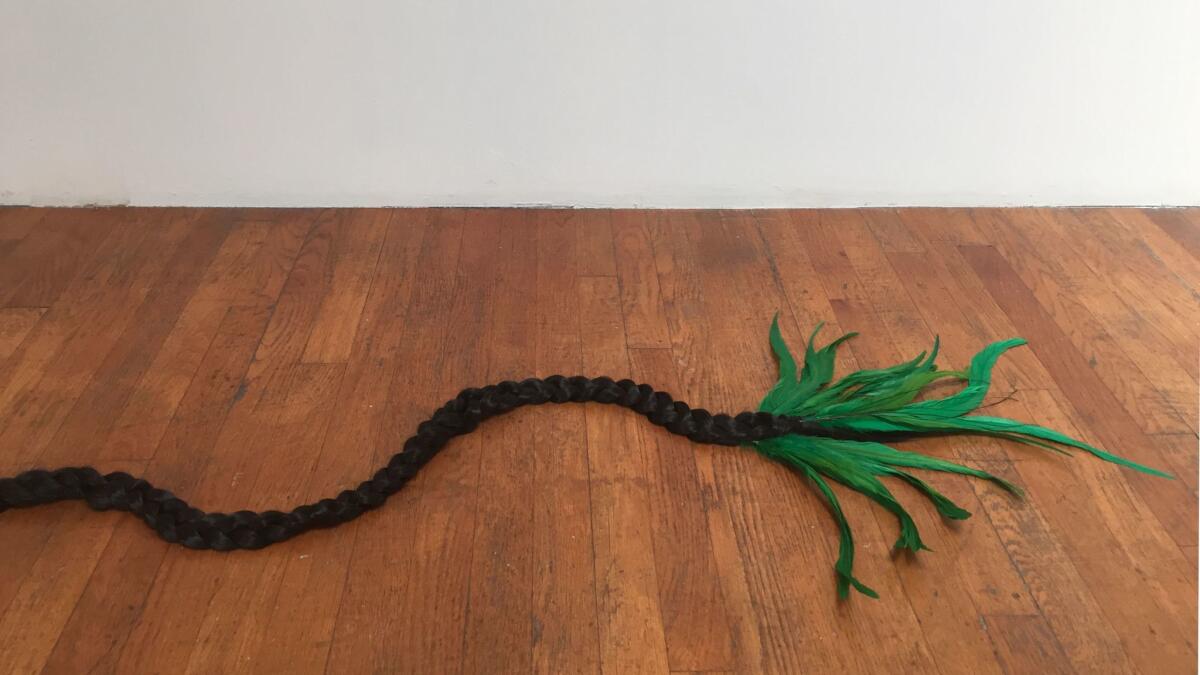
“Primordial saber tararear…” at Regen Projects. Curated by gallery artists Abraham Cruzvillegas and Gabriel Kuri, the show takes as a point of inspiration a series of illustrations about cultural routes and trade created by the master Mexican painter and illustrator Miguel Covarrubias. From there, it connects to work by a range of international artists who are in dialogue with Covarrubias’ (and therefor Latin America’s) ideas. This will include work by figures such as Germán Venegas, Michael Stevenson and Ariel Schlesinger, among others. Opens Saturday at 6 p.m. and runs through Oct. 28. 6750 Santa Monica Blvd., Hollywood, regenprojects.com.
“A Universal History of Infamy: Virtues of Disparity,” at the 18th Street Arts Center. This represents Part 2 of the exhibition of the same name that recently opened at the Los Angeles County Museum of Art. The show includes 16 U.S. Latino and Latin American artists whose work often employs elements of research and anthropology and explores a range of global concerns. This will include small-scale pieces as well as three new projects produced for the site. The opening will feature a reading from the book of short stories by Jorge Luis Borges that inspired the title of the show. Opens Saturday at 5 p.m. and runs through Dec. 15. 1639 18th St., Santa Monica, 18thstreet.org.
“El eje del mal,” at Ruberta. Five avant-garde Latin American galleries have joined forces to create a rotating exhibition pop-up space that will run for a year. Galería Agustina Ferreyra, Lodos, and BWSMX (all from Mexico City, as well as Proyectos Ultravioleta from Guatemala City and Carne, based in Bogota, each will take turns staging two month exhibitions at a space adjacent to the Pit in Glendale. Things will kick off this week with a group show put together by all five spaces that looks at the ways in which Latin American artists contend with Spanish colonial history. This sounds like a space to keep an eye on. Opens Sunday at 4 p.m. and runs through Oct. 22. 918 Ruberta Ave., Unit B, Glendale, ruberta.la.
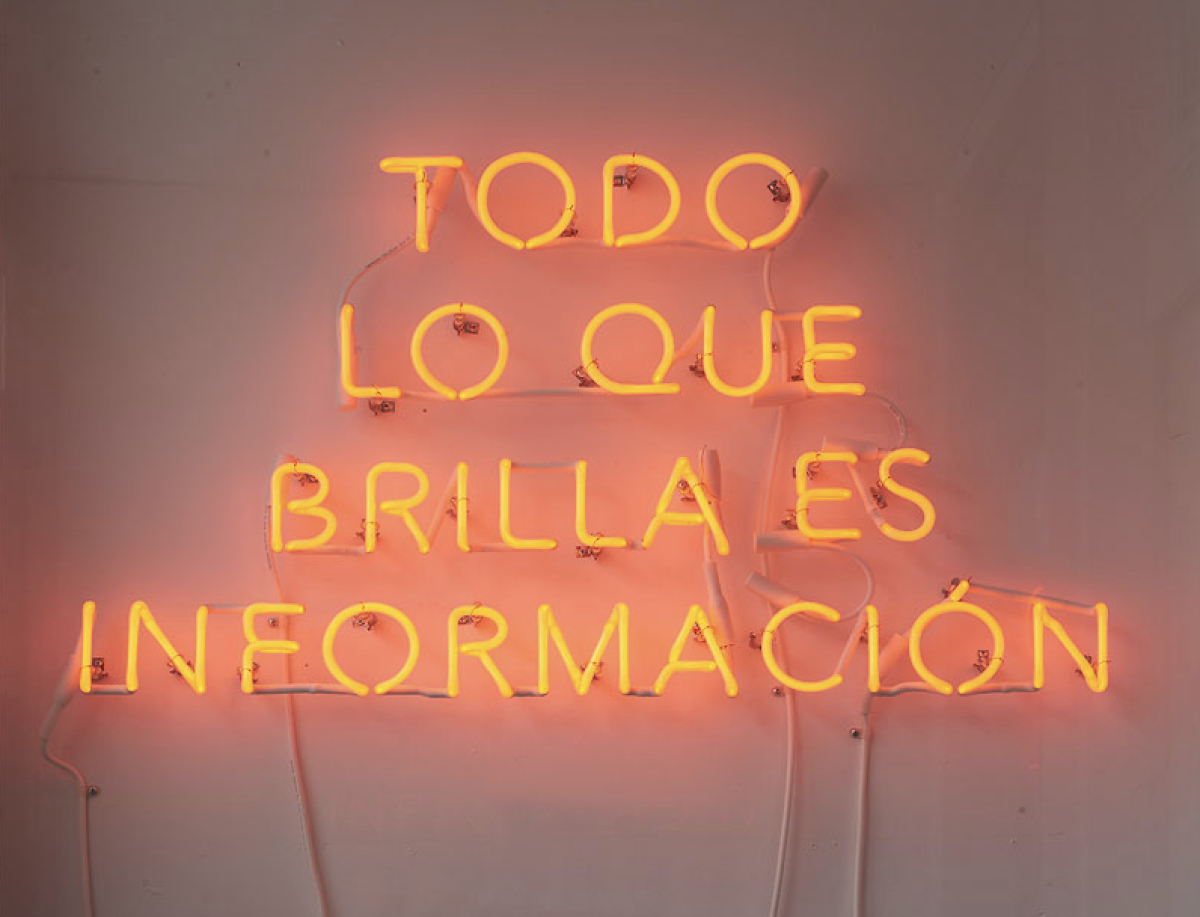
Ruben Ochoa, “Sampled y Surveyed,” at Art + Practice. Over the course of his career, the Oceanside-born artist has long used elements of the urban landscape as his primary material: chain link, concrete, steel and bits of earth. In fact, Ochoa once quite famously jammed a slab of wall and a mound of earth into a room for an installation that looked as if a destabilized portion of freeway had crashed into a white cube. This new exhibition at Art + Practice considers Ochoa’s large-scale pieces and the ways in which they employ, manipulate and transform space. Opens Saturday at 4 p.m. and runs through Jan. 27. 3401 W. 43rd St., Leimert Park, Los Angeles, artandpractice.org.
Lorenzo Hurtado Segovia, “Vida, pasión y muerte,” at CB1 Gallery. In his fifth solo show at the gallery, the L.A.-based artist, known for his elaborate works of woven paper (known as papel tejido) is turning his attention to traditional woodworking techniques, explorations of pattern and multimedia pieces that are inspired by aspects of Christian theology. Also on view are a series of beguiling new paintings that employ tar from the La Brea Tar Pits. Opens Saturday at 4 p.m. and runs through Oct. 21. 1923 S. Santa Fe Ave., downtown Los Angeles, cb1gallery.com.

Hugo Crosthwaite, “In Memoriam Los Angeles,” at the Los Angeles Methodist Museum of Social Justice. The noted Tijuana painter, known for phantasmagoric black and white murals that seamlessly fuse slices of urban life with the slightly deranged and fantastical, is creating an improvisational mural that is inspired by his observations of people in downtown Los Angeles. The mural will be painted only during the opening hours, during which time the public is invited to drop in and observe. After completing the work, Crosthwaite will then proceed to obliterate the piece by painting it out bit by bit. Through Feb. 25. An opening reception will take place on Oct. 14. La Plaza United Methodist Church, 115 Paseo de la Plaza, Los Angeles, museumofsocialjustice.org.
“Tell Me A Story, Contemporary Mexican Photography,” at Kopeikin Gallery. An exhibition curated by artist Alejandro Cartagena brings together a mix of contemporary photographers working in Mexico — some in ways that toy with the nature of the medium; others that more directly tangle with issues of politics amid the country’s turmoil. Also on view will be a new installation by Cartagena titled “The Collective Memory of the Worst Place to Live in the World Today If You Are Not White,” which examines life in the city of Santa Barbara. Opens Saturday and runs through Oct. 21. 2766 S. La Cienega Blvd., Culver City, kopeikingallery.com.
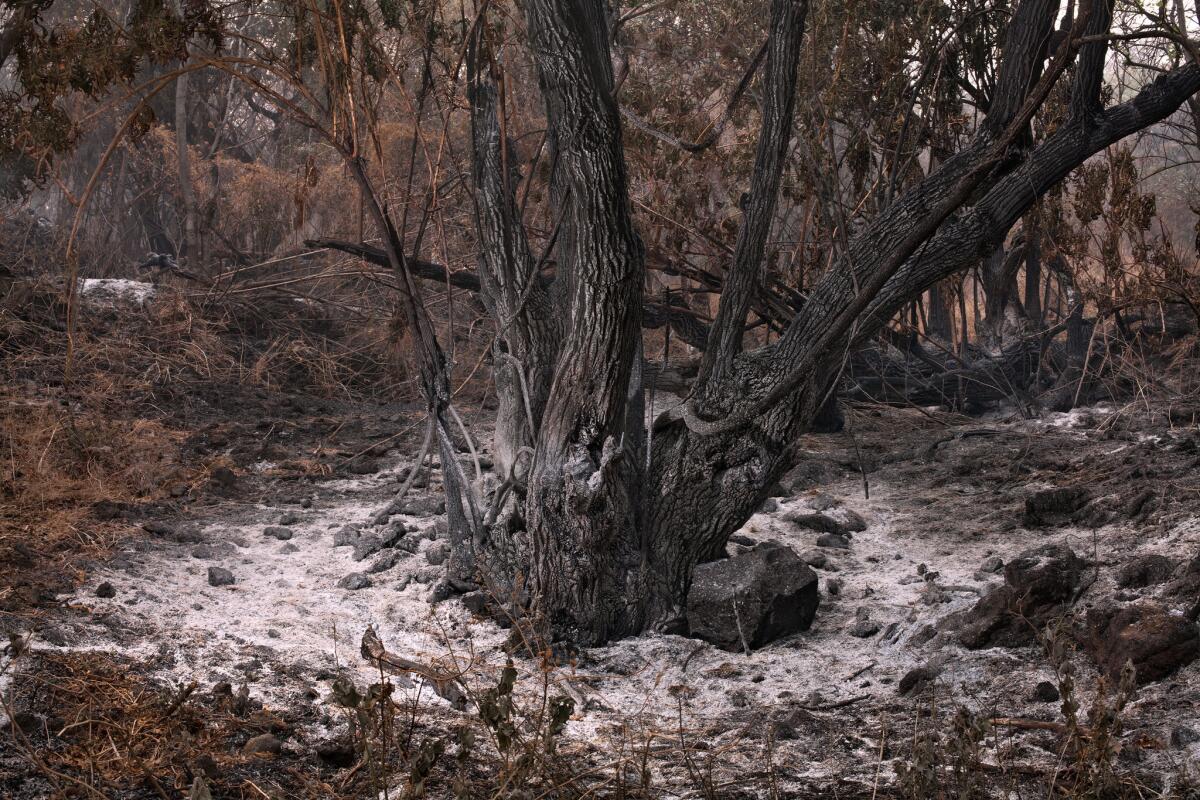
“Los Super Elegantes: I Am the Door,” at Gavlak. The collaborative duo of Martiniano Lopez-Crozet (from Argentina) and Milena Muzquiz (who hails from Mexico) straddle all kind of genres. The pair have worked as an experimental sound act, staged performances, written works of theater and been part of a wry musical group that played with the tropes of pop. The show at Gavlak gathers films of their early experimental happenings, art objects and ephemera from throughout their career. Opens Saturday at 6 p.m. and runs through Nov. 4. 1034 N. Highland Ave., Hollywood, gavlakgallery.com.
“Conceptual Craft,” at Denk Gallery. A group exhibition featuring the works of Lynn Aldrich, Jeff Colson, Tim Hawkinson and others features work that uses the hand-made to explore conceptual ideas. This includes work that touches on the architectonic, the abstract, the biomorphic and everything in between. Opens Saturday at 6 p.m. and runs through Oct. 14. 749 E. Temple St., downtown Los Angeles, denkgallery.com.
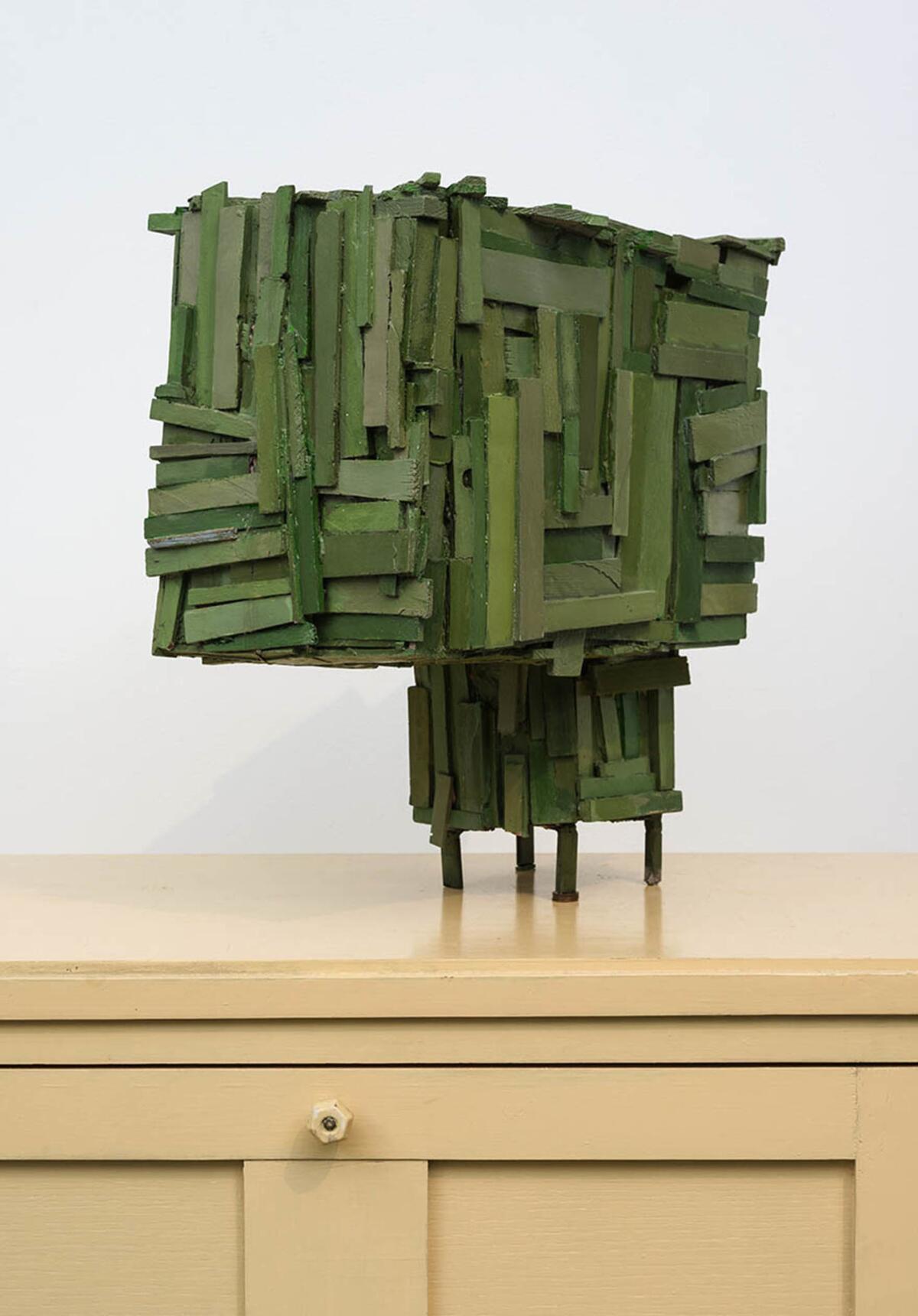
Lawrence Halprin, “Alternative Scores — Drawing From Life,” at Edward Cella Art & Architecture. This is the first exhibition to bring together the rarely seen drawings of landscape architect Lawrence Halprin, who was known for designing Freeway Park in Seattle and the Sea Ranch community north of San Francisco. The designer used drawing as a way of conceiving projects but also to record the world around him. This includes tranquil landscapes, whimsical images of dancers, abstract patterns and random household objects. Opens Saturday at 6 p.m. and runs through Oct. 28. 2754 S. La Cienega Blvd., Culver City, edwardcella.com.
Solange Pessoa, at Blum & Poe. In her first solo exhibition in the United States, the Brazilian artist will be presenting paintings and sculptures that conjure the prehistoric and the organic: ancient tools, early symbols, mollusk fossils and other objects both natural and manmade. Opens Saturday at 6 p.m. and runs through Oct. 14. 2727 S. La Cienega Blvd., Culver City, blumandpoe.com.
Molly Larkey, a shape made through its unraveling, at Ochi Projects. Larkey takes recognizable structures — letters of the alphabet, cinder blocks, bits of steels — and refashions them into objects that are vastly more open-ended. One work will consist of a series of ceramic pieces that will be dispersed as a series of pendants, given to visitors to wear or to keep — a big work that will exist in many fragments. Opens Saturday and runs through Oct. 21. 3301 W. Washington Blvd., Arlington Heights, Los Angeles, ochiprojects.com.
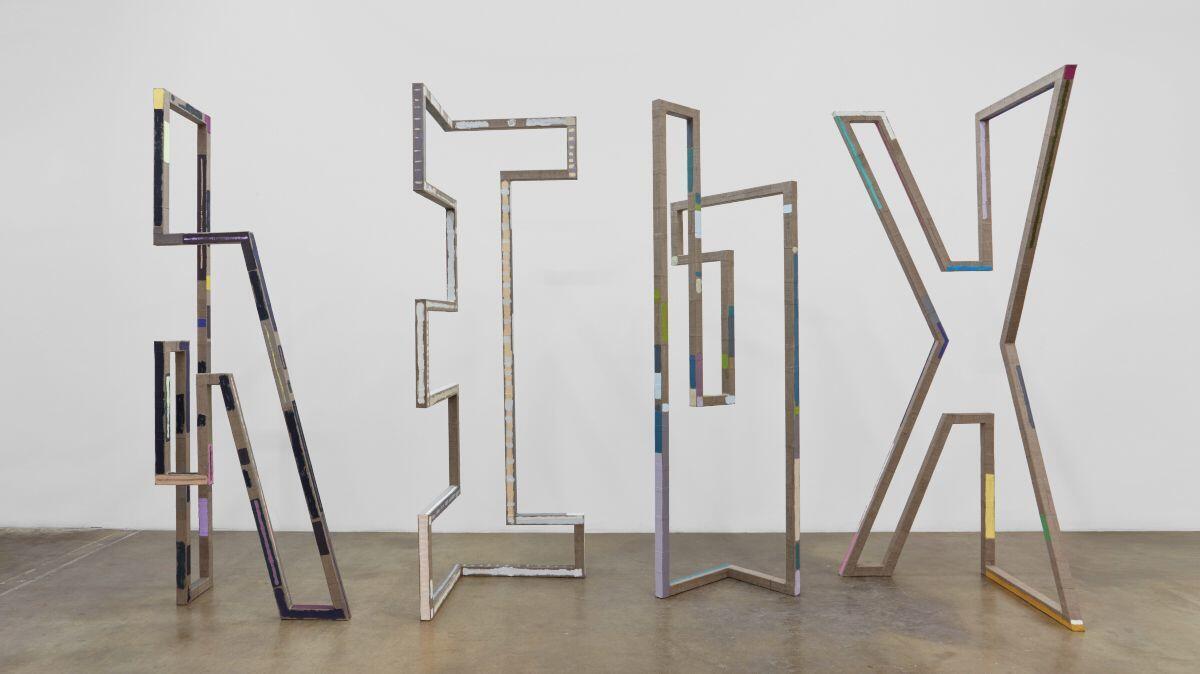
[Eff] the Patriarchy, at Gas. This gallery operates out of a truck that parks around Los Angeles. For this politically minded show (note: it contains salty art language) figures such as Jibz Cameron, Roy Martinez, Ana Roldán, Gallery Y2K and Paul Chan and Badlands Unlimited.take on the topic of refusal. As the press release notes, “especially relevant under
Last chance
John Divola, “Physical Evidence,” at Gallery Luisotti. The longtime SoCal artist, who was featured in the most recent Whitney Biennial, is known for his stark pictures of abandoned domestic spaces that often bear wry bits of his own alterations. The show brings together two major bodies of work: the “Five Prints Portfolio” from the 1980s and “Untitled, 1990,” from the following decade — which though seemingly opposite in nature (one bursts with color and objects, the other is abstracted black and white) are both about the thin line between the real and the artificial. Through Saturday. Bergamot Station, 2525 Michigan Ave., No. A2, Santa Monica, galleryluisotti.com.

“Los Angeles to New York: Dwan Gallery, 1959-1971,” at the L.A. County Museum of Art. Previously on view at the National Gallery of Art in Washington, this exhibition tracks the legacy of one of the most important postwar galleries in the United States — a space that, for a time, operated in Los Angeles. Its proprietor, Virginia Dwan, wasn’t simply a run-of-the-mill gallerist, she was a patron, supporting artists with stipends and studios. She staged one of the earliest Pop Art exhibitions and she was an important supporter of Minimalism. Plus, she was key in helping artists execute the most outrageous works — including important land art pieces such as Robert Smithson’s “Spiral Jetty.” Talk about thinking big. Through Sunday. 5905 Wilshire Blvd., Mid-Wilshire, www.lacma.org.
Ongoing exhibitions
“Illuminating Women in the Medieval World” at the Getty Museum. Drawn from the museum’s collection of medieval illuminations, this exhibition pulls together images that represent the medieval woman in various guises: as biblical heroines, saints and nuns. The show also explores the ways in which women contributed to the production of manuscripts during that era. Through Sept. 17. 1200 Getty Center Dr., Brentwood, Los Angeles, getty.edu.
Paul McCarthy, “Spinoffs, Wood Statues, Brown Rothkos,” at Hauser & Wirth. McCarthy is known for tackling the grotesque and the excessive in American culture. This show features nine monumental carved black walnut sculptures that are part of his continuing examination of the 19th century German fairy tale “Snow White,” along with Disney’s more Modern interpretation — but in ways that are hardly about happy endings. Through Sept. 17. 901 E. 3rd St., downtown Los Angeles, hauserwirthlosangeles.com.
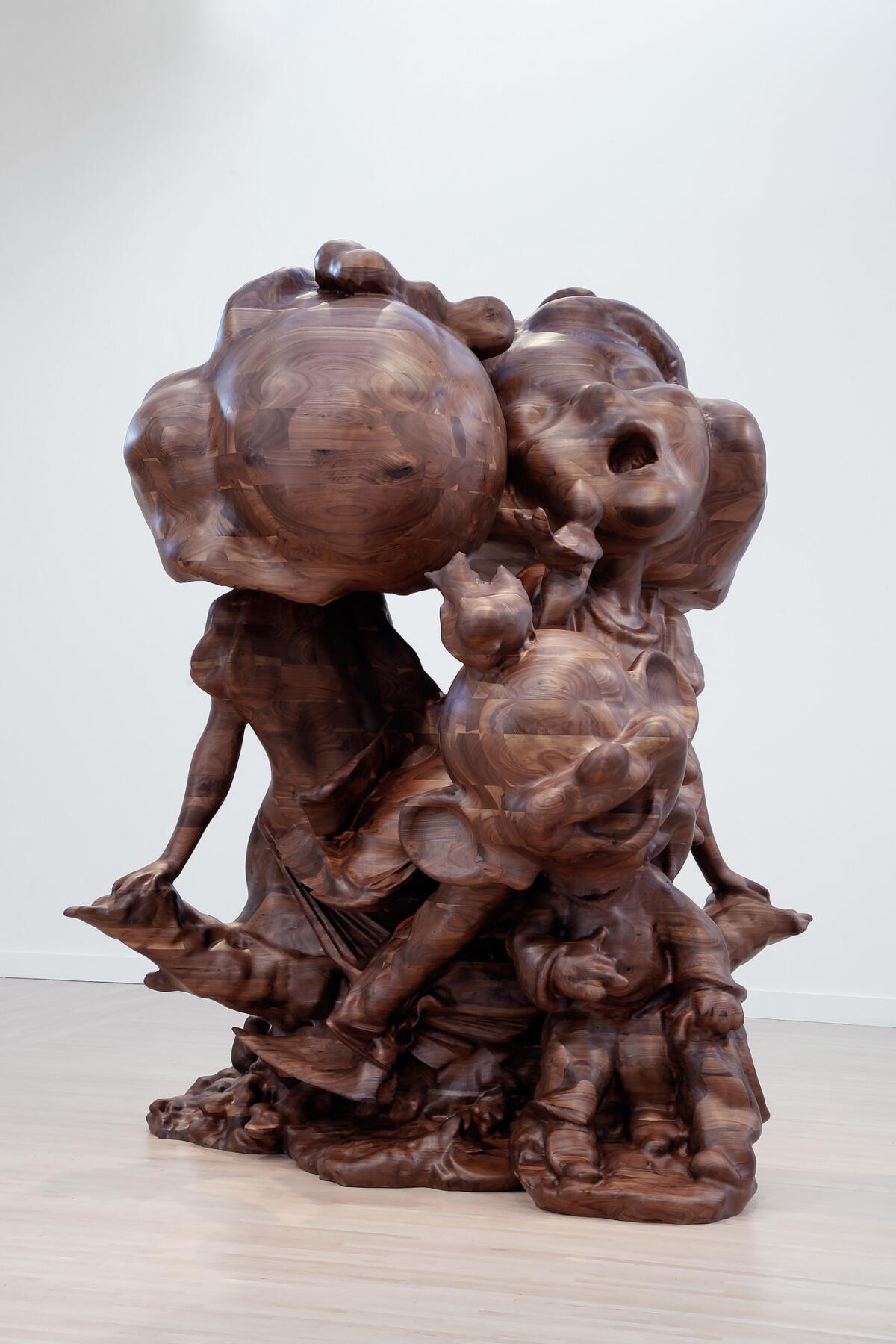
Sean David Christensen and Michael Nannery, at the Grand Central Art Center. On view is video by Sean David Christensen that explores his father’s manic depression and an experimental interior garden by Michael Nannery. Through Sept. 17. 125 N. Broadway, Santa Ana, grandcentralartcenter.com.
Jim Shaw, “The Wig Museum,” at Marciano Art Foundation. Shaw is a Los Angeles artist who has long been obsessed with marginal religious movements and secretive social orders. Which makes him the perfect artist to take over the cavernous theater at the Marciano Art Foundation, which once served as a masonic temple. (Among the various collections in his studio, Shaw maintains a box of masonic wigs.) For this installation, he has employed vintage masonic theater backdrops that were found at the space for a sprawling diorama that riffs on the themes that preoccupy him most: capitalism and its discontents. Also on view is an exhibition of works from Marciano’s private collection. Through Sept. 17. Admission is free but advance reservations are required. 4357 Wilshire Blvd., Windsor Square, Los Angeles, marcianoartfoundation.org.
“Down and to the Left: Reflections of Mexico in the NAFTA Era,” at Armory Center for the Arts. A group exhibition featuring work by a range of Mexico and U.S-based artists takes as its point of departure the ’90s NAFTA years, a period of great change, when Mexico came out of a relative period of isolation, and when the local and the global became one. It was also a time when the Zapatista rebellion against the government had galvanized indigenous people and international audiences. Many of the works on view by artists such as Javier Téllez, Nao Bustamante, Lourdes Grobet and Pedro Mayer deal with this climate of economic and political unrest. Through Sept. 17. 145 N. Raymond Ave., Pasadena, armoryarts.org.
Phil Dike, “At the Edge of the Sea,” at the Laguna Art Museum. Raised in Redlands in the early part of the 20th century, Dike was a story designer for Walt Disney (working on animated classics such as “Fantasia”) and also taught at Chouinard (which ultimately became CalArts), and later, Scripps College. But he also painted — watercolor sketches that captured wind, sand and sea. At first, he did this in literal ways. Later in his career, he reached toward the purely abstract. This show gathers 40 years of works from the California regionalist, featuring more than 60 paintings, including many that have never before been seen. Through Sept. 24. 307 Cliff Dr., Laguna Beach, lagunaartmuseum.org.
Star Montana, “I Dream of Los Angeles,” at the Main Museum. Montana is an artist known for her stark, formally posed photographic portraits — a style she employs on the everyday denizens of Los Angeles, including people she meets on the streets in her native Boyle Heights as well as others that she has met through open calls. This show gathers various new works. The museum will also have an exhibition devoted to Alice Könitz’s prototypes for new types of museum seating. Through September 24.114 W. 4th St., downtown Los Angeles, themainmuseum.org.
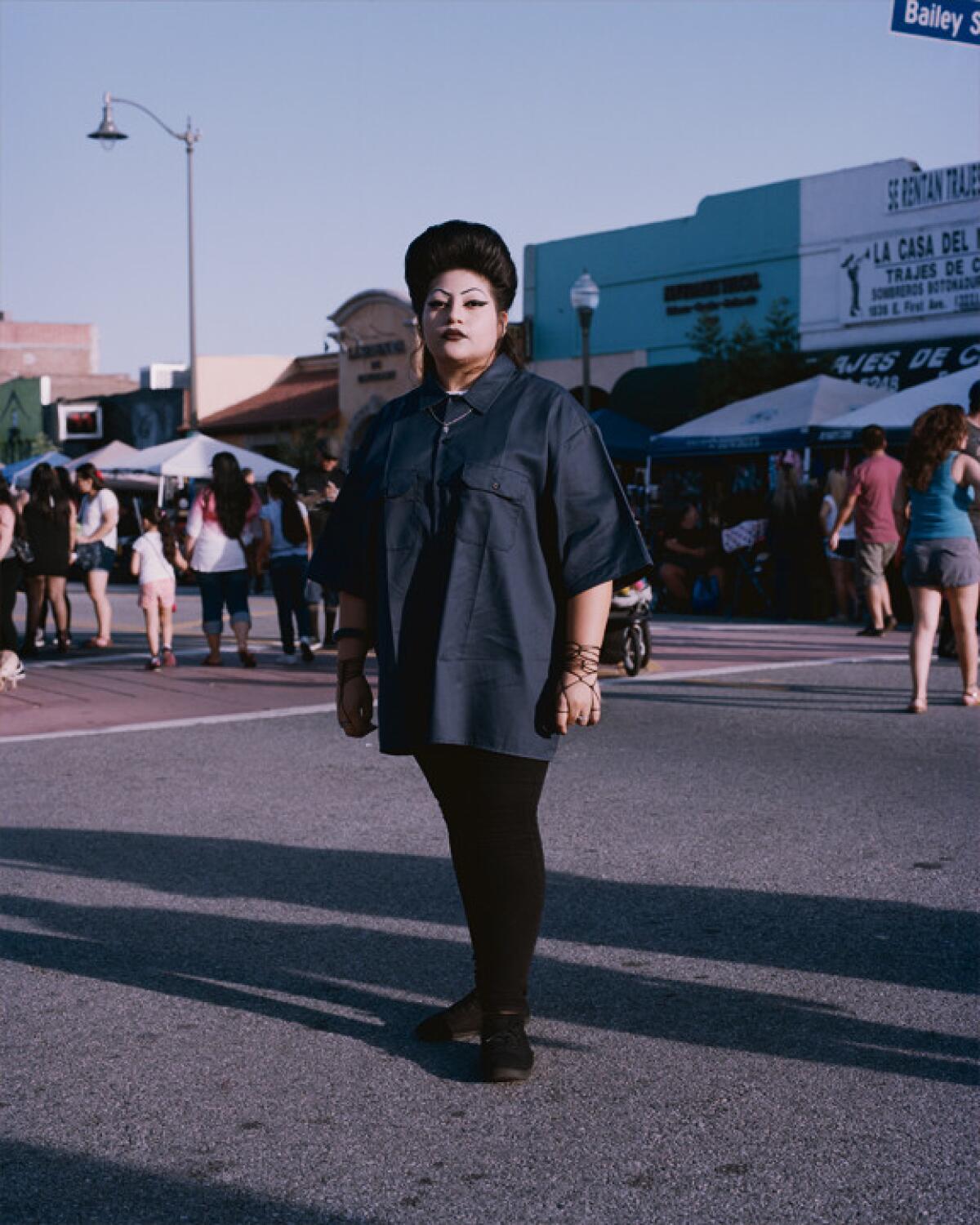
“Maven of Modernism: Galka Scheyer in California,” at the Norton Simon Museum. This exhibition examines the life of a key art dealer: Galka Scheyer, who embraced Modern work early in the 20th century and was partly responsible for bringing the artists known as the “Blue Four” to prominence in the United States. (They were Lyonel Feininger, Alexei Jawlensky, Paul Klee and Vasily Kandinsky.) Born in Germany in the late 19th century, she ultimately settled in California, where she lived in San Francisco and later in Hollywood, where she found an audience that was open to the work and its ideas. The exhibition contains work by the Blue Four, but also objects and other artworks that connect to Scheyer’s personal and professional life. Through Sept. 25. 411 W. Colorado Blvd., Pasadena, nortonsimon.org.
“Space is the Place,” at C. Nichols Project. Besides presidential tweeting, the other big story we got sucked into this season was the solar eclipse. Thankfully, there’s an art show for that: “Space is the Place” features “Night Sky” prints by Vija Celmins, depictions of deep space objects by Russell Crotty and a painting inspired by a National Geographic image of a corona by Jack Goldstein. There are many other works too — by artists from L.A. and beyond. Through Sept. 21. 12613 ½ Venice Blvd., Mar Vista, cnicholsproject.com.
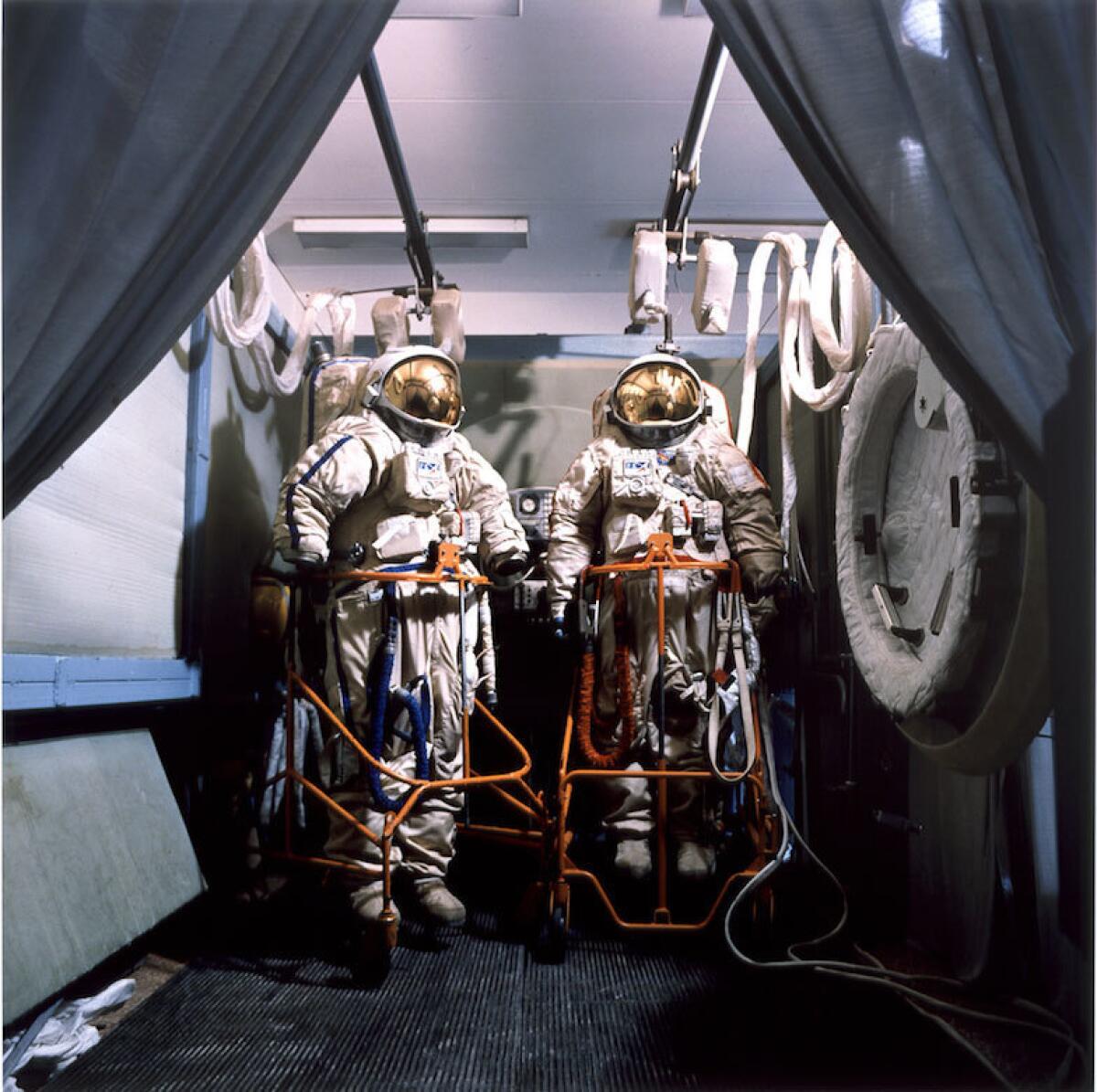
Robert Grosvenor, at Maccarone. The gallery is showing three large-scale sculptures by the New York City artist, known for producing works that often seem to defy gravity. (Times art critic Christopher Knight notes the power of the piece he currently has on view at LACMA as part of the group exhibition “Los Angeles to New York: Dwan Gallery, 1959-1971.”) These more recent works see him mixing his signature industrial materials with found and other objects in ways that riff on materials and balance. Through Sept. 30. 300 S. Mission Road, Boyle Heights, maccarone.net.
“Sea Sick in Paradise,” at the Depart Foundation Malibu Village. A group show organized by Amy Yao looks at that righteous point where art and surfing intersect — touching on surf culture and history, as well as environmental concerns. This include a mix of pieces by Billy Al Bengston, Jeff Ho, Stanya Kahn, Margaret Kilgallen, Barry McGee, Roe Etheridge and Tin Ojeda — among many others — at a pop-up space in Malibu. Through Sept. 30. 3822 Cross Creek Road, Malibu, departfoundation.com.
“Artists of Mexico: Paintings, Drawings, Prints, Sculpture,” at Jack Rutberg Fine Arts. A group show looks at the Mexican artists who have had an important resonance in Los Angeles, including key Mexican masters such as Rufino Tamayo, David Alfaro Siqueiros and Rufino Tamayo. This includes those who have influenced artists in the area, along with others who have labored in the city — such as Siqueiros, who spent six months living in L.A. in 1932, during which time he painted his famously controversial mural at Olvera Street, “America Tropical.” Through Sept. 30. 357 N. La Brea Ave., Fairfax District, Los Angeles, jackrutbergfinearts.com.
“Gary Simmons: Fade to Black,” at the California African American Museum. In a new lobby installation — one that takes full advantage of the size and scale — Simmons pays tribute to forgotten African American actors and films. On a black background, the L.A. artist features the titles and names of films and individuals important to the early days of Hollywood history, but forgotten over time. The installation offers a good point of connection with the new exhibition “Center Stage: African American Women in Silent Race Films,” which features posters and screenings of pioneering films. Also on view is a pretty terrific exhibition of portraiture called “Face to Face,” featuring standout works by Lynette Yiadom-Boakye, Titus Kaphar and Mequitta Ahuja. The Simmons installation is on view through July 2018; “Face to Face” is up through Oct. 8 and “Center Stage” through Oct. 15. 600 State Drive, Exposition Park, Los Angeles, caamuseum.org.
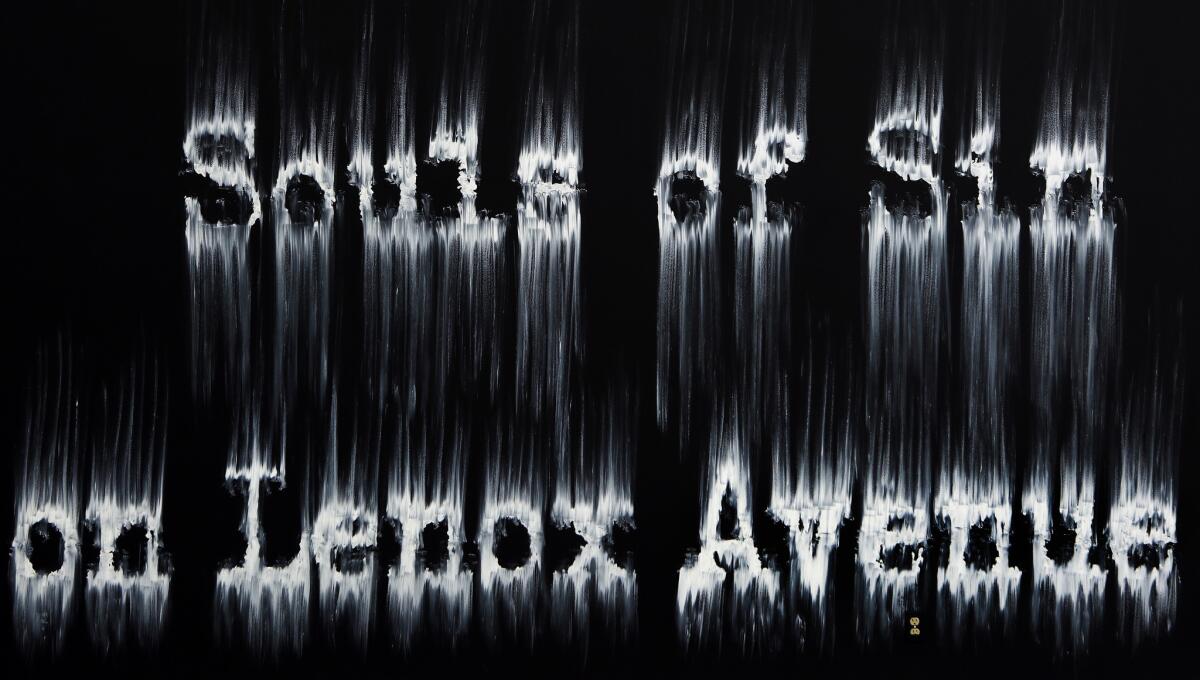
“Home — So Different, So Appealing,” at the Los Angeles County Museum of Art. This is the first of the Getty-funded Pacific Standard Time: Los Angeles / Latin America series — and it couldn’t land at a better social and political moment. The show, a collaborative effort between LACMA, the Museum of Fine Arts Houston and UCLA’s Chicano Studies Research Center, thoughtfully explores the way in which Latino and Latin American artists have used elements of the domestic to comment on issues of the personal and the political in art. The assembled works — by figures such as Felix Gonzalez Torres, Luis Camnitzer and Leyla Cardenas — include installations that ruminate on immigration, urban architecture, control and subtle resistance. The conversation piece? Perhaps Daniel Joseph Martinez’s recreation of a spliced Unabomber cabin painted in Martha Stewart shades. Through Oct. 15. 5905 Wilshire Blvd., Mid-Wilshire, Los Angeles, lacma.org.
“Becoming America: Highlights From the Jonathan and Karin Fielding Collection,” at the Huntington Library. The Huntington has just redone its American art galleries and now features a new expansion by architects at Frederick Fisher and Partners that adds eight rooms for display. Up first is an exhibition devoted to the Fielding Collection, featuring more than 200 works of 18th and early 19th century American art, including paintings, furnishings and decorative art. Through Oct. 28, 2019. 151 Oxford Road, San Marino, huntington.org.
“We Are Here/Estamos Aquí,” at SDSU’s Downtown Gallery. A group exhibition looks at the ways in which artists have tackled the question of the U.S.-Mexico border in photography — be it installation, landscape portraiture or still life. The show includes work from both sides of the border, including pieces by Ingrid Hernandez, Stefan Falke, Tom Kiefer, Pieter Wisse and the group Borderclick. Through Oct. 29. 725 W. Broadway, San Diego, art.sdsu.edu.
“Playing With Fire: Paintings by Carlos Almaraz,” at the Los Angeles County Museum of Art. He was an activist and artist, a founder of the groundbreaking collective Los Four, but also a singular painter whose deeply saturated visions of Southern California — its car crashes and its landscapes — bordered on the hallucinatory. This exhibition represents the first major survey devoted to the Los Angeles artist, who died at the age of 48 from AIDS-related complications. The show features 65 works and will be accompanied by the publication of the first full-length monograph devoted to Almaraz’s life and work. Through Dec. 3. 5905 Wilshire Blvd., Mid-Wilshire, Los Angeles, lacma.org.
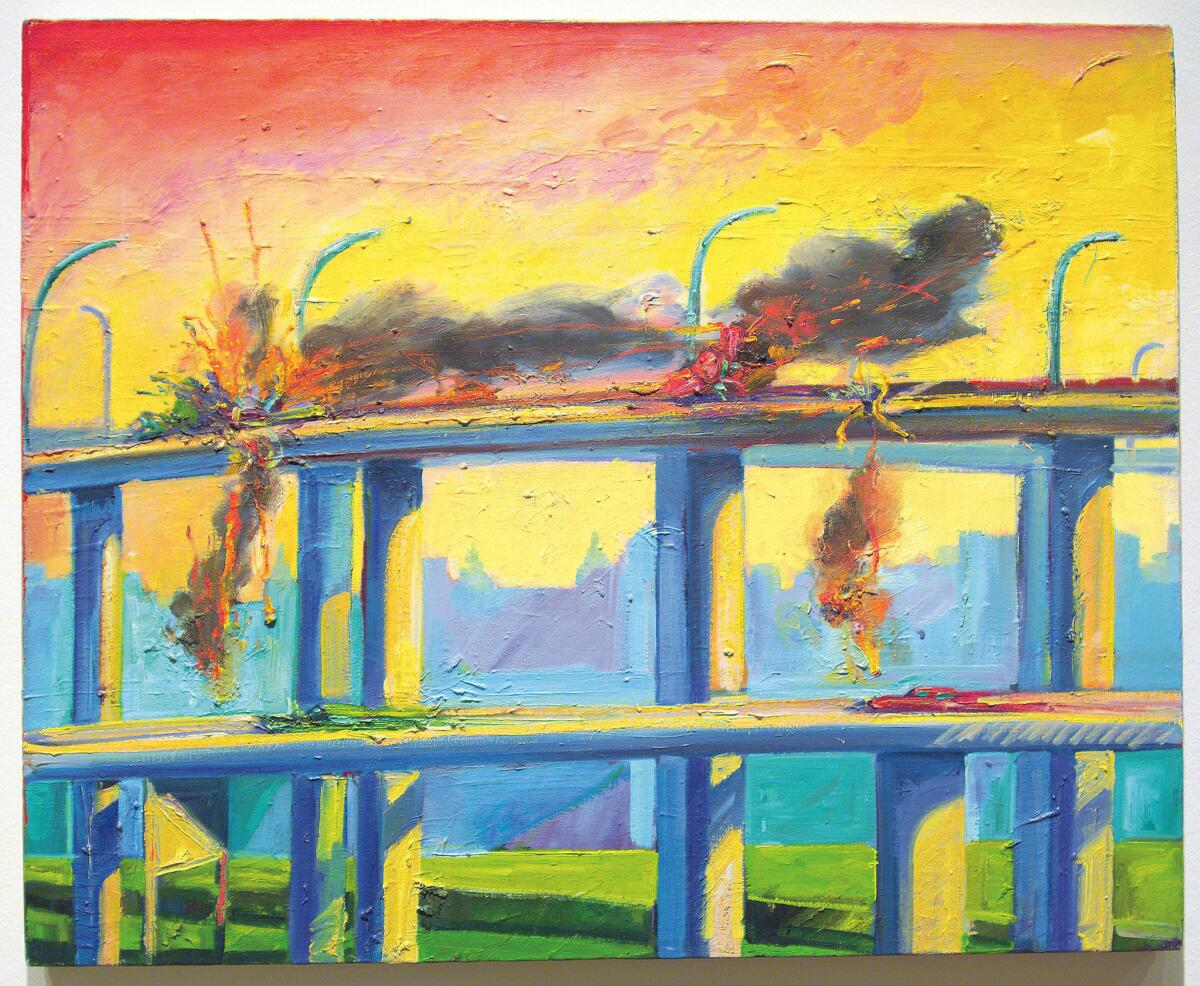
“¡Mírame! Expressions of Queer Latinx Art,” at La Plaza de Cultura y Artes. A group show brings together artists from various Latino backgrounds who explore issues of sexuality and identity in their art, including Xandra Ibarra, Alma Lopez, Julio Salgado and noted photographer Laura Aguilar, known for the striking portraits she creates of herself and others. Through Dec. 9. 501 N. Main St., downtown Los Angeles, lapca.org.
Fran Siegel, “Lineage Through Landscape: Tracing Egun in Brazil,” at the Fowler Museum. A large-scale drawing project by the Long Beach-based artist was inspired by a recent residency in Brazil, where she conducted research in, among other places, the Island of Itaparica, an important center of Afro-Brazilian religious practice. Her 40-foot-long piece consists of a weaving that brings together strips of fabric and drawings of sacred plants on translucent film — a record of the landscapes she inhabited, and the troubled histories some of those represent. Through Dec. 10. UCLA, 308 Charles E. Young Drive North, Westwood, Los Angeles, fowler.ucla.edu.
“Prometheus 2017: Four Artists from Mexico Revisit Orozco,” at the Pomona College Museum of Art. Pomona College is the site of an important mural by Mexican master José Clemente Orozco. For this PST: LA/LA exhibition, the curators have gathered the work of four female artists working in Mexico — Isa Carrillo, Adela Goldbard, Rita Ponce de León and Naomi Rincón-Gallardo — whose work resonates with Orozco on topics such as history, justice, power and storytelling. At 7 p.m. Nov. 18, Goldbard will perform a fireworks exhibit in conjunction with the show — so mark your calendars. Through Dec. 16. 330 N. College Ave., Claremont, pomona.edu/museum.
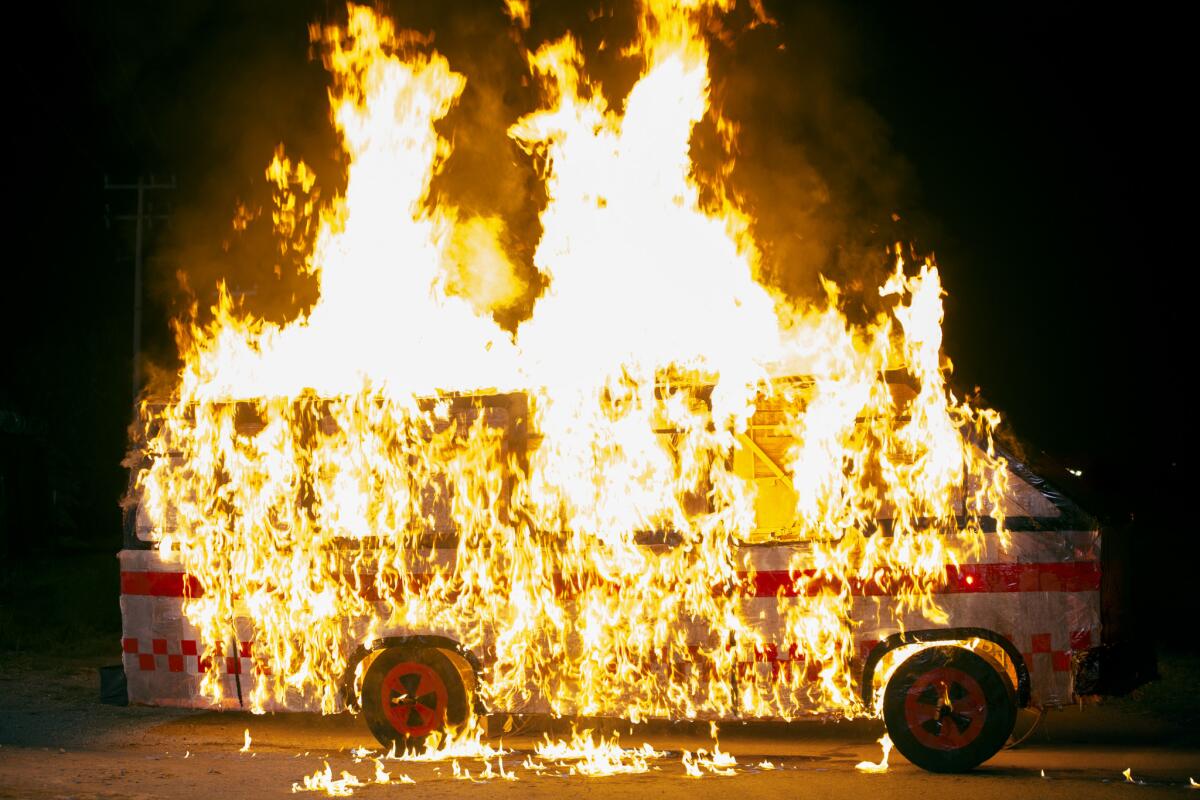
“We the People: Serving Notice,” at the American Museum of Ceramic Art. Directly engaging the complicated politics of our era, the museum has invited a range of ceramics artists to create works that “serve notice” on a range of contemporary issues, including immigration, human rights, freedom of speech and myriad other topics. This includes work by Jessica Putnam-Phillips, Peter Olson, Robert Lugo and many others. Through Dec. 30. 399 N. Garey Ave., Pomona, amoca.org.
Anna Maria Maiolino, at the Museum of Contemporary Art. This is the first comprehensive U.S. museum survey of the work of the Italian-born Brazilian artist, who over the course of her restless, five-decade career has explored themes of repression, marginalization and womanhood. This includes photography, performance and three-dimensional assemblage. A large room contains one of her vast unfired-clay installations — bursting with small and large forms — a tribute to process and viscera. This too is part of the PST: LA/LA circuit. And it’s one not to miss. Through Dec. 31. 250 S. Grand Ave., downtown Los Angeles, moca.org.
“Nervously Engendered: The Art of Gerardo Velazquez,” at Coagula Curatorial. The pioneering East L.A. musician, founder of the band Nervous Gender, was as much about making experimental music as he was about creating a queer Chicano aesthetic. This show gathers his art work and ephemera from his music career. Through Dec. 31. 974 Chung King Road, Chinatown, Los Angeles, coagulacuratorial.com.
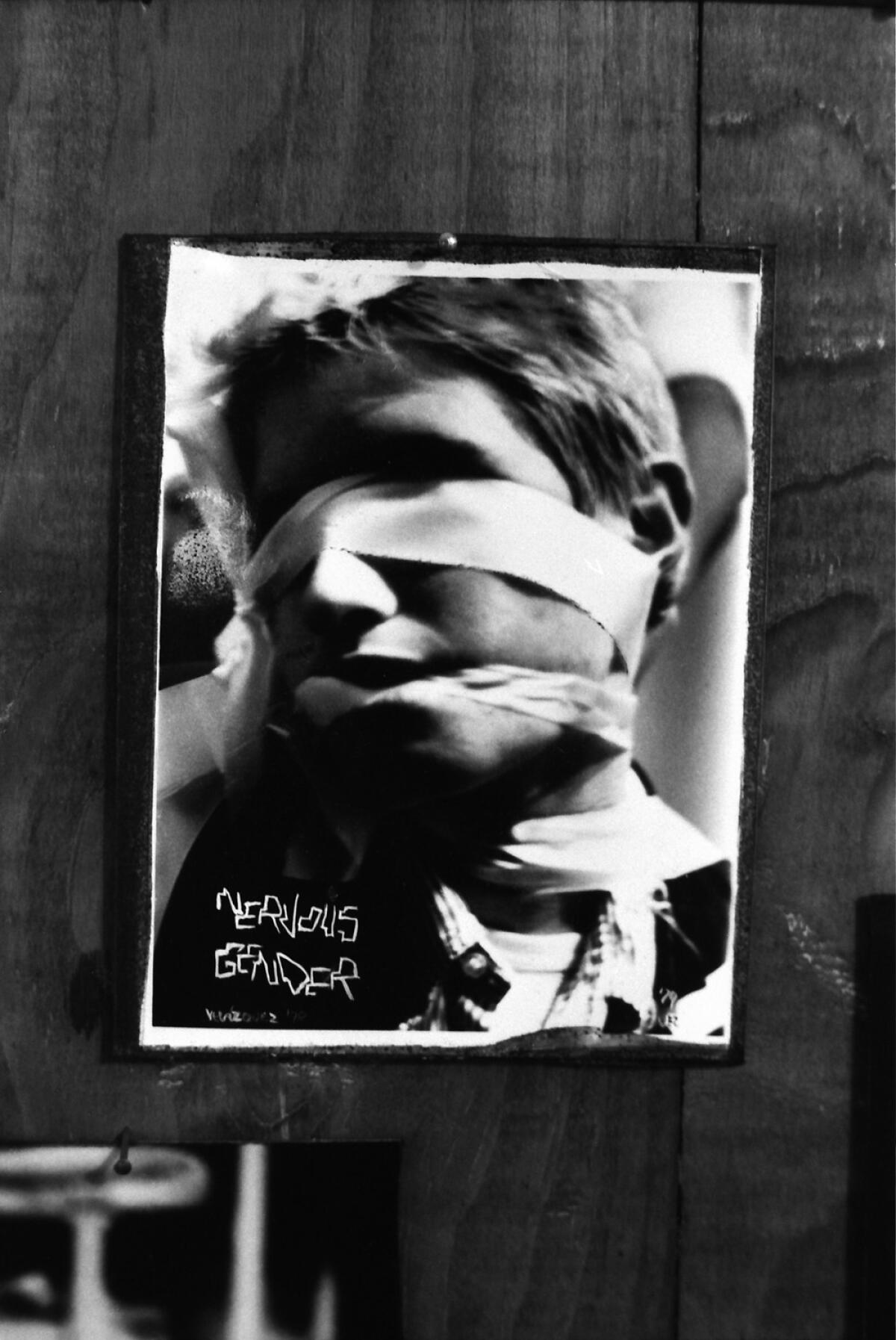
“Neo Native: Toward New Mythologies,” at the Maloof Foundation. This exhibition features more than 40 works by 11 contemporary U.S. artists with Native American roots — including painting, photography, ceramics and more. This includes works by painter Gerald Clarke Jr., ceramicist Diego Romero, conceptual artist Cannupa Hanska Luger and photographer Cara Romero. Opens Sunday and runs through Jan. 7. 5131 Carnelian St., Alta Loma, malooffoundation.org.
“Chagall: Fantasies for the Stage,” at the Los Angeles County Museum of Art. Marc Chagall frequently depicted musicians and dancers in his paintings. He also painted the sets and costumes in which they performed. This exhibition at LACMA, organized by the Montreal Museum of Fine Arts in Canada, gathers Chagall’s costumes, set designs and other ephemera from four productions: the ballet “Aleko,” Stravinsky’s “The Firebird,” Maurice Ravel’s “Daphnis and Chloé” and Mozart’s opera “The Magic Flute.” Expect pure, wondrous theater. Through Jan. 7. 5905 Wilshire Blvd., Mid-Wilshire, Los Angeles, lacma.org.
“Hollywood in Havana: Five Decades of Cuban Posters Promoting U.S. Films,” at the Pasadena Museum of California Art. Part of the Pacific Standard Time: Los Angeles / Latin America series, this exhibition gathers five decades of Cuban posters promoting Hollywood films such as “Moby Dick” and Charlie Chaplin’s “The Kid” (a.k.a. “El Chicuelo”) — a whirlwind graphic tour of film history through a Caribbean lens. The museum also has an exhibition devoted to the work of California painter E. Charlton Fortune, a Californian known for creating impressionist and Modernist landscapes, as well as a range of ecclesiastical work. Through Jan. 7. 490 E. Union St., Pasadena, pmcaonline.org.
“Kinesthesia: Latin American Kinetic Art, 1954-1969,” by Palm Springs Art Museum. Paris has long been thought of as the heart of the kinetic art movement — art that plays with light, form and shape to create a sensory experience. But this exhibition, organized by guest curator Dan Cameron as part of the Pacific Standard Time: Los Angeles / Latin America series, looks at the contributions to the movement by important South American figures. This includes innovative work by key figures as Carlos Cruz-Diez, Julio Le Parc and Martha Boto. Definitely worth a weekend in the desert. Through Jan. 15. 101 N. Museum Dr., Palm Springs, psmuseum.org.
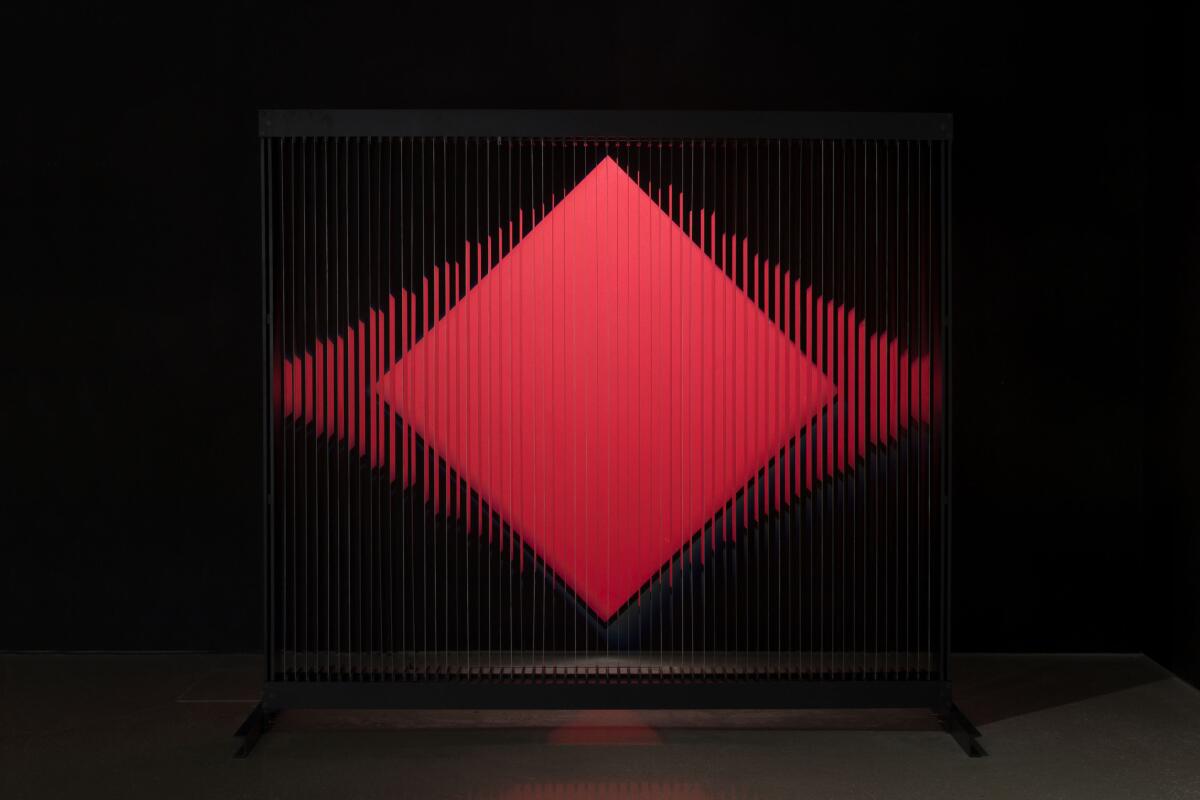
Judithe Hernández and Patssi Valdez: One Path Two Journeys, at the Millard Sheets Art Center. Two of Los Angeles’ most iconic Chicana artists come together for this two-woman show, which features a broad selection of current works as well as a new collaborative installation. The Millard Sheets Art Center is at the L.A. County Fairgrounds, which means that after you check out the show, you can always pop into the fair for some funnel cake. Through Jan. 28. 1101 W. McKinley Ave., Pomona, pacificstandardtime.org.
Standing Rock: Art and Solidarity, at the Autry. The Standing Rock protest in North Dakota attracted an unprecedented protest that brought together native and non-native cultures in a unified front against the proposed Dakota Access pipeline. This exhibition gathers ephemera from that action, including poster art, clothing and photographs. Through Feb. 18. 4700 Western Heritage Way, Griffith Park, Los Angeles, theautry.org.
“A Universal History of Infamy,” at the Los Angeles County Museum of Art. The latest in the PST: LA/LA series brings together the work of 16 Latin American and U.S. Latino artists that challenge notions of region. Many of the artists don’t inhabit a single country — often going back and forth between multiple locations, cultures and ideas. The show includes installation and performance by artists such as Brazilian Carla Zaccagnini, who is preoccupied with history; Stefan Benchoam and Jessica Kairé, who manage an egg-shaped mini-museum in Guatemala; and Colombian Angeleno artist Gala Porras-Kim, whose work often explores the ways in which culture is presented and interpreted. The show will take place across three venues, including the BCAM galleries at LACMA, the museum’s exhibition space at Charles White Elementary School near MacArthur Park (opening Dec. 9), and the 18th Street Arts Center in Santa Monica (opening Sept. 9), where a number of the show’s artists had residencies. Through Feb. 19. 5905 Wilshire Blvd., Mid-Wilshire, Los Angeles, lacma.org.
John Ford, Samuel Fuller, George Stevens, “Filming the Camps: From Hollywood to Nuremberg,” at the Los Angeles Museum of the Holocaust. Organized by the Mémorial de la Shoah in Paris, this exhibition looks at the vital work done by three key American filmmakers during
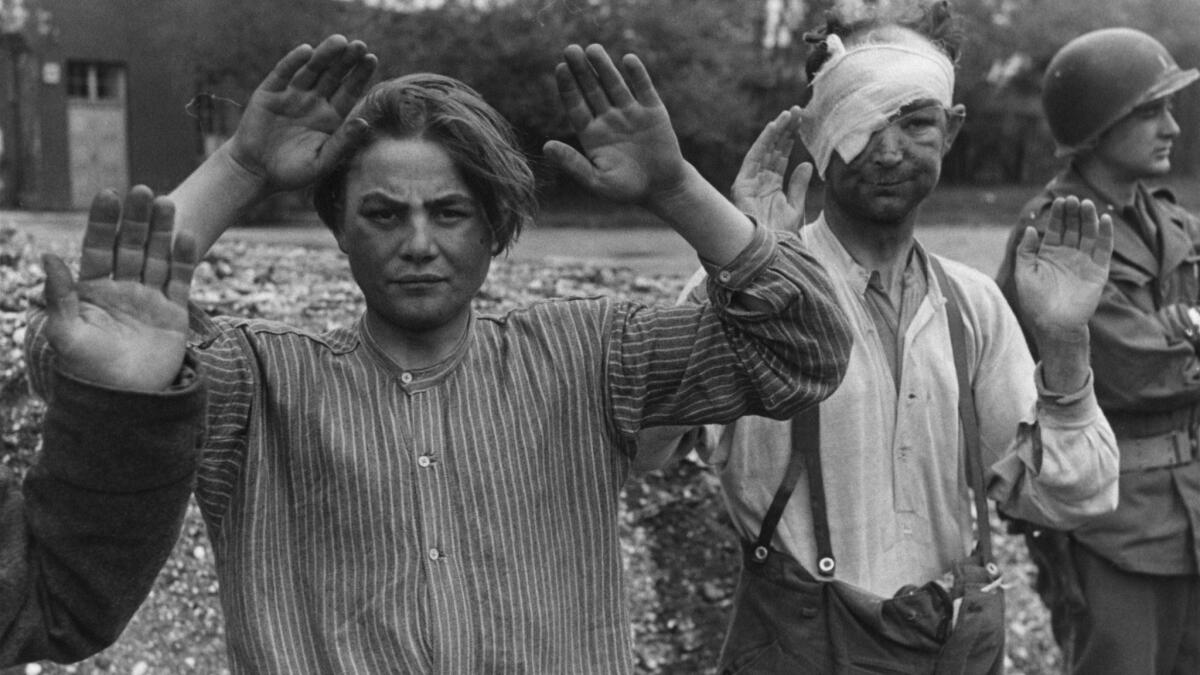
“Artists of Color,” at the Underground Museum. As part of its ongoing partnership with the Museum of Contemporary Art, the Arlington Heights arts space has put together an exhibition that focuses on color — on its aesthetics, as well as the roles color can play as a symbol, affecting the way it’s perceived both socially and politically. The show includes works by an array of artists, including Ellsworth Kelly, Dan Flavin, Lita Albuquerque, EJ Hill, Felix Gonzalez-Torres, Josef Albers, Carmen Herrera and Noah Davis (the late founder of the Underground Museum). It’s a striking look at color seen anew. On long-term view; no closing date set. 3508 W. Washington Blvd., Arlington Heights, theunderground-museum.org.
“L.A. Communities Through the Eyes of Artists,” in the Passageway Gallery at Union Station. For 15 years, L.A.’s principal train station has been showcasing work that reveals the city through the eyes of its artists. This year, it is showing a series of newly commissioned pieces — including Shizu Saldamando’s depiction of Little Tokyo, Sam Pace on Leimert Park and Artemio Rodriguez on East L.A. On long-term view; no closing date set. Union Station, 800 N. Alameda St., downtown Los Angeles, metro.net.
Alejandro G. Iñárritu, “Carne y Arena,” at LACMA. The gripping new virtual reality experience by the Academy Award-winning director places the participant in the shoes of migrants making the arduous trek through the Sonoran desert to reach the United States. This may sound like the trivialization of what can be a fatal journey, but it is not. Iñárritu has considered all of the elements that surround his virtual reality video to humanize the story of immigration on the U.S.-Mexico border. I wrote about my experience of the piece in June. It’s not cheap (it’s a $30 special admission, in addition to regular museum fees) but it’s worth every penny. On long-term view; no closing date set. 5905 Wilshire Blvd., Mid-Wilshire, Los Angeles, lacma.org.
“Pow! Wow!” in Long Beach. The public mural series held in Long Beach every year is back with a series of nearly two dozen new murals in locations around the city, including parking garages and underpasses. Murals will be on long-term view in locations around Long Beach, powwowlongbeach.com.
Daniel Hawkins, “Desert Lighthouse.” The Los Angeles-based artist is obsessed with producing works that toy with ideas of grandiosity, failure and gestures that border on the Sisyphean. (One of his goals as an artist is to ultimately build a scale replica of Hoover Dam.) Now Hawkins has installed a 50-foot tall, fully functioning lighthouse in the Mojave Desert in the vicinity of Barstow. The piece even features a light to guide travelers through this rugged landscape. Directions and coordinates can be found on the website. On long-term view, Hinkley, Calif., desertlighthouse.org.
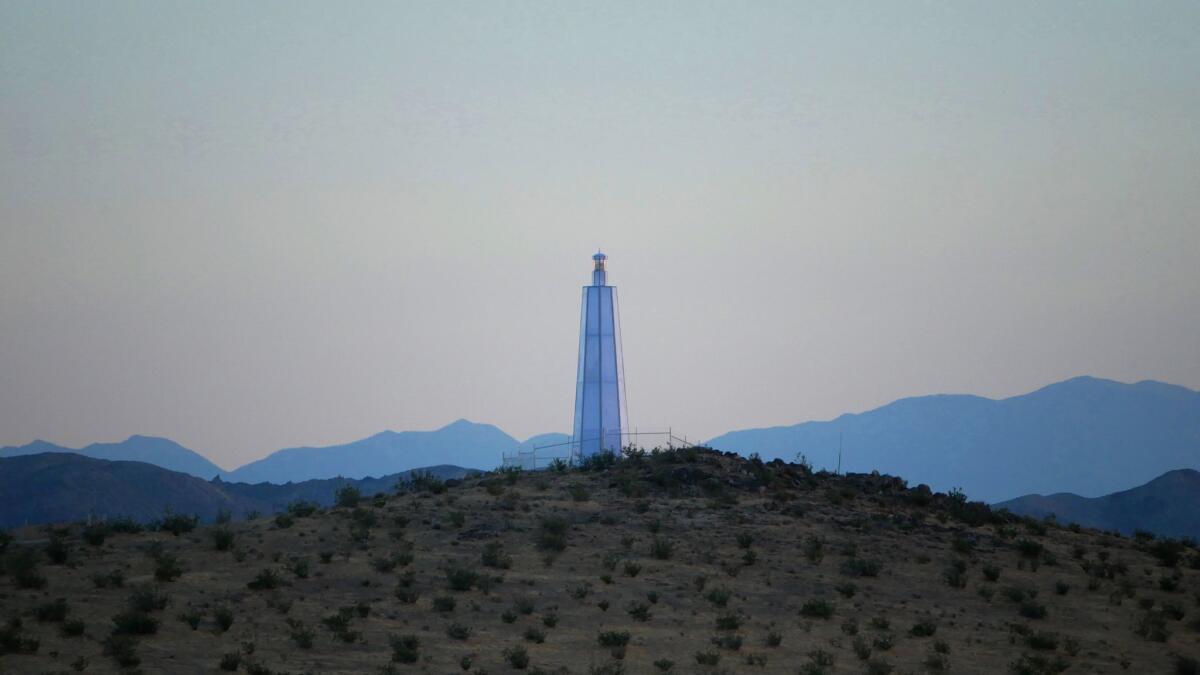
Sign up for our weekly Essential Arts & Culture newsletter »
Twitter: @cmonstah
The biggest entertainment stories
Get our big stories about Hollywood, film, television, music, arts, culture and more right in your inbox as soon as they publish.
You may occasionally receive promotional content from the Los Angeles Times.








